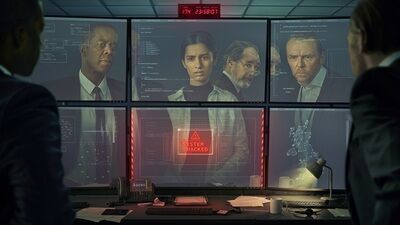One of the problems is that the majority of “The Undeclared War” is seen through the eyes of a dull protagonist, a young work experience student named Saara (Hannah Khalique-Brown) who shows up at GCHQ (Government communications Headquarters) on the day that someone attacks the U.K. tech system. She’s a woefully underwritten character from the beginning, a writer’s device—the quiet new girl who can solve problems in a way that the traditional structure cannot—instead of a real person. And efforts to fill out her character with a family tragedy and a relationship at her new job are shallow and manipulative, in part because Khalique-Brown can’t get a handle on Saara, someone who seems mostly apathetic to what’s happening around her when she’s not being used by the writers. There’s a version of “The Undeclared War” that doesn’t rely so heavily on a character that’s so flatly conceived and executed.

The world-changing developments into which Saara stumbles start with that attack, which seem pretty bad—air travel stopped, some networks went down—but not the end of the world. As GCHQ and the relatively new Prime Minister (Adrian Lester) try to track down the source of the attack (and presume Russia), Saara discovers that it was just the beginning. There’s another timed attack in the malware, set to devastate the U.K. much more thoroughly, and then she finds an even deeper embedded message, continuing her journey through this tech wonderland.
Kosminsky steps away from Saara’s journey at times to paint a bigger picture of what’s at play in powerful countries around the world; he gets his most interesting mileage when unpacking how sock puppets, bots, and deliberate peddlers of misinformation are shaping not just perception but action. Saara’s boyfriend James (Edward Holcroft) is a part of a protest movement that doesn’t even realize how much it’s being shaped by misinformation. Kosminsky also spends time with a Russian journalist who is literally being used as a propaganda mouthpiece by her corrupt government.
























































![Key Metrics for Social Media Marketing [Infographic] Key Metrics for Social Media Marketing [Infographic]](https://www.socialmediatoday.com/imgproxy/nP1lliSbrTbUmhFV6RdAz9qJZFvsstq3IG6orLUMMls/g:ce/rs:fit:770:435/bG9jYWw6Ly8vZGl2ZWltYWdlL3NvY2lhbF9tZWRpYV9yb2lfaW5vZ3JhcGhpYzIucG5n.webp)

















